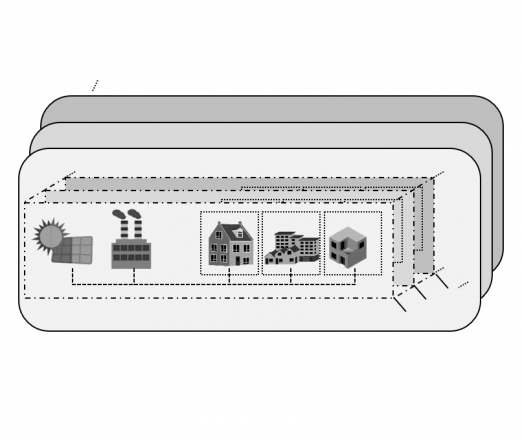Energy balance district tool
The tool and associated courses developed by PHI allow city planning departments and energy advisors to perform a district energy balance calculation, with an emphasis on buildings, and investigate different refurbishment scenarios.
DistrictPH can be used to create energy balances for neighbourhoods, from smaller groups of buildings up to whole districts. The tool provides support on questions such as the appropriate energy supply options, the design of reasonable retrofit subsidies, and how a district may become zero-energy.
DistrictPH can also investigate the impacts of different scenarios of development and retrofitting, considering electricity and heat networks, renewable energies, electromobility and public consumers.
DistrictPH is available in Excel. It relies on input data about the district (building type, size, energy supply, public electricity consumers) and its expected future development (probabilities of refurbishment, etc.). It then calculates the current energy use in the district, including electricity and district heating networks, how it is covered, and its development over time. The tool considers the following contributions to the district’s energy balance and their interactions:
- Heating, cooling, domestic hot water and electricity demand of buildings;
- Refurbishment scenarios;
- Energy production in buildings and at district level;
- Other electricity consumptions (street lighting, energy consumption of tramways and electric cars).
Ongoing beta tests show very promising results
PHI is currently running a beta test phase with several users. First feedback indicates that users like the capabilities, transparency and flexibility of districtPH, but still with some variability in the assessment of the complexity resulting from its capabilities. This topic is still subject of the beta test. Some accompanying training material was also developed and successfully tested during pilot workshops in 2019 and 2020.
